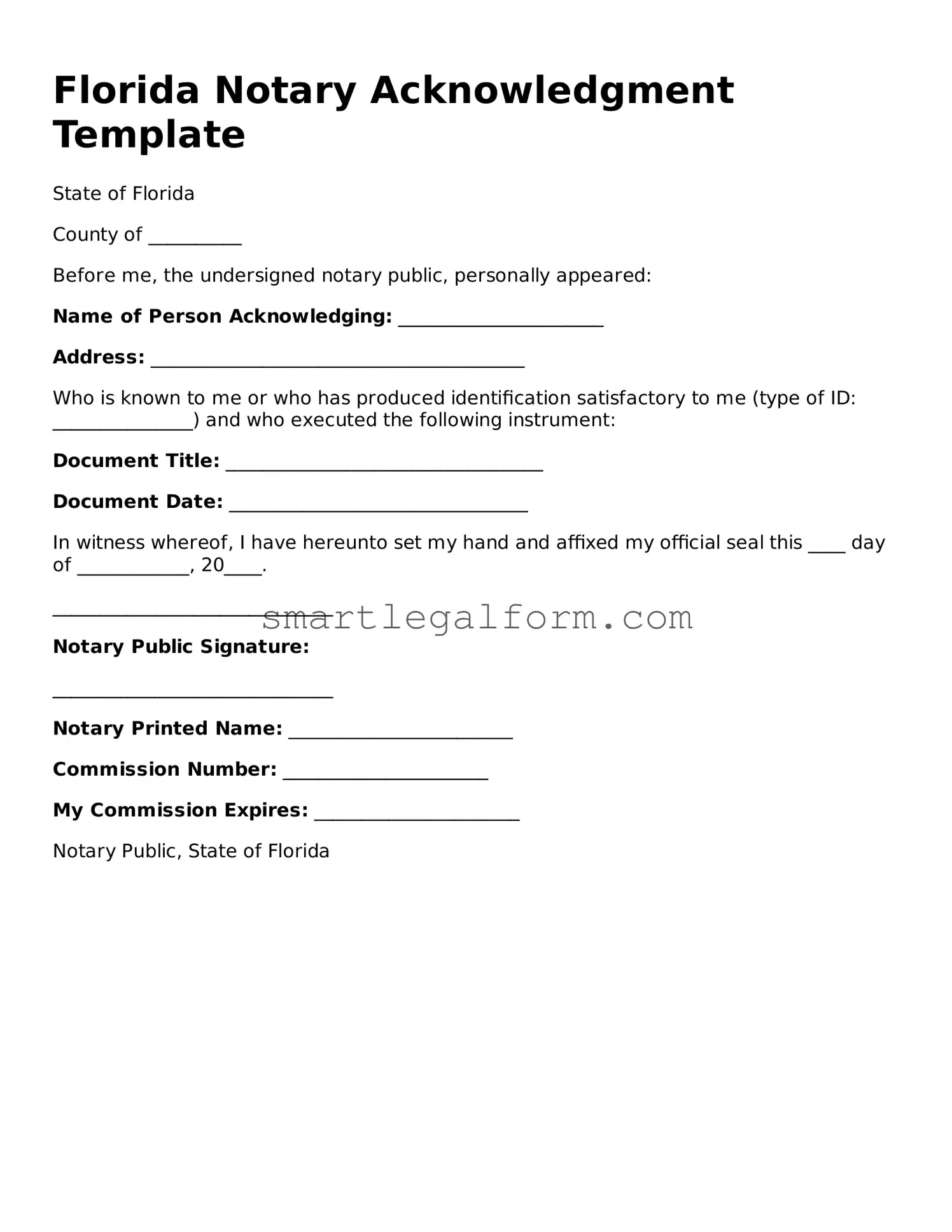Printable Florida Notary Acknowledgement Document
The Florida Notary Acknowledgement form is a legal document that serves to confirm the identity of a signer and the voluntary nature of their signature on a document. This form is essential in various legal and financial transactions, ensuring that the parties involved are protected and that the documents are executed properly. To begin the process of filling out this important form, please click the button below.
Fill Out Your Form Online
